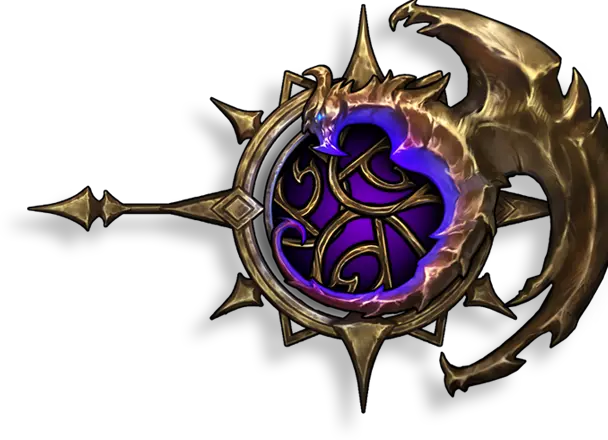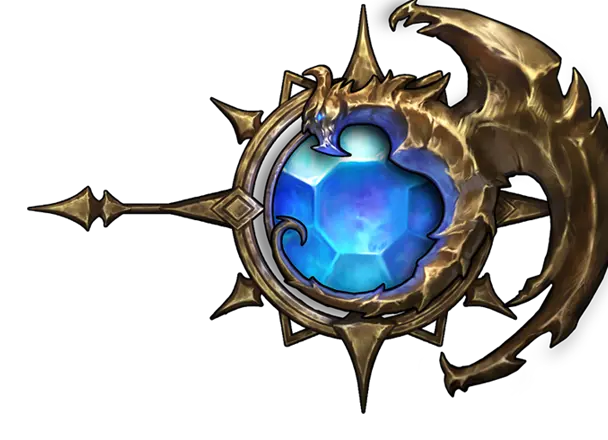Unraveling the Complexity: The Inner Workings of Card Game Mechanics
Understanding Game Mechanics
Definition and Importance
When we talk about card game mechanics, we refer to the fundamental elements that define and shape the gameplay experience. These mechanics encompass the rules, challenges, goals, actions, strategies, and game states that interact with each other to create meaningful consequences within the game world (Game Design Skills). Understanding these mechanics is crucial for both players and designers, as they determine how a game is played and how enjoyable and engaging it can be.
In the realm of digital collectible card games, mechanics play a pivotal role in crafting a strategic and immersive experience. For instance, the rule in Uno where a player must place a card matching the current number or color exemplifies a basic game mechanic. Changing or introducing a new mechanic, like a flip card in Uno, can significantly alter the gameplay experience and strategies employed by players.
Core Elements of Game Mechanics
The core elements of card game mechanics involve several key components that work together to create a cohesive and engaging game. These elements include:
- Rules: The guidelines that dictate how the game is played. For example, in a digital card game, rules might specify how cards are drawn, played, and discarded.
- Challenges: Obstacles or tasks that players must overcome to achieve their goals. Challenges can range from defeating an opponent to managing limited resources.
- Goals: The objectives that players strive to achieve. These can be short-term, like winning a single round, or long-term, like becoming the overall champion.
- Actions: The possible moves or decisions players can make during the game. In a card game, actions could include playing a card, drawing a card, or activating a special ability.
- Strategies: The plans and tactics players develop to achieve their goals. Effective strategies often involve careful consideration of the rules, challenges, and available actions.
- Game States: The various conditions and phases of the game that result from players’ actions. Game states can change dynamically based on the interplay of rules, actions, and strategies.
To illustrate the importance of these core elements, consider a digital collectible card game like Hearthstone. The game mechanics involve drawing cards, managing resources (mana), and strategically playing cards to defeat the opponent. The rules and actions are clearly defined, and players must develop strategies to navigate the challenges and achieve their goals.
| Core Elements | Description |
|---|---|
| Rules | Guidelines dictating gameplay |
| Challenges | Obstacles to overcome |
| Goals | Objectives to achieve |
| Actions | Moves or decisions available |
| Strategies | Plans and tactics |
| Game States | Conditions and phases of the game |
By understanding these core elements, we can better appreciate the complexity and depth of card game mechanics. This knowledge not only enhances our gameplay experience but also informs the design and development of new and innovative card games.
Types of Game Mechanics
Understanding the different types of game mechanics is crucial for anyone interested in digital collectible card games. These mechanics provide the foundation for gameplay and strategizing. Here, we will delve into three primary types of game mechanics: resource management, turn-based mechanics, and player interaction.
Resource Management
Resource management is a fundamental mechanic in many card games. This involves the allocation, collection, and utilization of resources to achieve various objectives within the game. Effective resource management can dictate the flow of the game and the strategies players employ.
In games like Catan, resource management involves placing workers, collecting resources, trading, and building structures (Game Design Skills). In digital collectible card games, resources can be mana, energy, or other in-game currencies that players use to play cards or activate abilities.
| Resource Type | Example Game | Function |
|---|---|---|
| Mana | Magic: The Gathering | Used to cast spells |
| Energy | Hearthstone | Powers card abilities |
| Gold | Gwent | Purchases cards or abilities |
Turn-Based Mechanics
Turn-based mechanics are another core element in many card games. This mechanic structures the game into discrete turns, where players take actions sequentially. Each player may draw cards, play cards, and perform other actions within their turn.
Drawing and playing cards are integral actions in turn-based mechanics, as they change the game state and alter the probabilities of future actions. This mechanic encourages strategic planning and anticipation of opponents’ moves.
| Game | Action per Turn | Strategy Element |
|---|---|---|
| Magic: The Gathering | Draw, play, attack | Anticipate opponent moves |
| Hearthstone | Draw, play, attack | Resource allocation |
| Gwent | Draw, play, pass | Round-based strategy |
Player Interaction
Player interaction mechanics enhance the dynamic nature of card games by allowing players to directly affect each other’s game states. This can include counterplay mechanisms, reactionary systems, and collaborative spell building.
In games like Magic: The Gathering, counterplay mechanics allow players to disrupt their opponent’s actions by countering spells or abilities (Stack Exchange). Another interactive mechanic is dynamic spell building, where players can add components to spells-in-progress, altering their outcomes.
| Interaction Type | Example Game | Mechanic |
|---|---|---|
| Counterplay | Magic: The Gathering | Counter spells |
| Reactionary | Hearthstone | Secret cards |
| Dynamic Spell Building | Custom Games | Build spells together |
By understanding these types of game mechanics, we can better appreciate the complexity and depth of digital collectible card games. Mastering resource management, turn-based actions, and player interactions can significantly enhance our gameplay experience and strategy.
Examples of Unique Game Mechanics
In this section, we will delve into some examples of card games with unique mechanics that distinguish them from the rest. These examples highlight how innovative gameplay can create engaging and memorable experiences.
Galaxy Trucker
Galaxy Trucker stands out due to its distinctive gameplay mechanics. In this game, players assemble spaceships from modular parts to deliver goods across space. The game features a two-phase system: the building phase and the flight phase. During the building phase, players must quickly and strategically select parts to construct their ships. In the flight phase, they navigate through a series of random events and environmental hazards, such as meteor showers and space pirates.
| Game Phase | Key Mechanics |
|---|---|
| Building Phase | Modular part selection |
| Flight Phase | Random events, environmental hazards |
Letters from Whitechapel
Letters from Whitechapel is a game of cat and mouse where one player assumes the role of Jack The Ripper and the other players are constables trying to catch him. The game involves strategic movement on a map of Whitechapel. Jack The Ripper moves secretly, recording his movements, while the constables move openly, trying to deduce his location. This game requires a high level of strategy and outwitting opponents, making it a thrilling experience (DEV Community).
| Role | Key Mechanics |
|---|---|
| Jack The Ripper | Secret movement, recording moves |
| Constables | Open movement, deduction, and strategy |
Gravwell
Gravwell is a race game set in space where players aim to escape a gravity well by playing numbered movement cards. The unique mechanic here is that movement is determined by proximity to other ships. Players are pulled towards the closest ship, which creates a dynamic and often chaotic gameplay environment, especially with four players. The strategy involves not just moving forward but also anticipating the movements of other players to avoid being pulled back.
| Game Aspect | Key Mechanics |
|---|---|
| Movement | Numbered movement cards, proximity-based pull |
| Player Dynamics | Anticipation, strategic positioning |
These examples illustrate how innovative mechanics can transform simple concepts into complex and engaging games. By exploring these unique game mechanics, we can appreciate the creativity and strategy involved in designing and playing card games.
Interactivity in Card Games
Interactivity is a crucial aspect of card game mechanics, enhancing the strategic depth and player engagement. Let’s explore three key mechanisms that facilitate interactivity in card games: counterplay mechanisms, reactionary systems, and dynamic spell building.
Counterplay Mechanisms
Counterplay mechanisms allow players to respond to each other’s actions, creating a dynamic and engaging gameplay experience. In games like Magic: The Gathering, counterplay is achieved through abilities like “suspend,” where players cast a spell, pass the turn, and opponents can counter the spell or take other actions before passing back.
| Game Mechanic | Example | Description |
|---|---|---|
| Suspend | Magic: The Gathering | Players cast a spell, then pass the turn, allowing opponents to counter or respond. |
| Interrupt | Various card games | Opponents can interrupt a player’s action with specific cards or abilities. |
Reactionary Systems
Reactionary systems are designed to create a “mage vs. mage” feel, where players can play threats and see if their opponents can remove or negate those threats. This system allows for a highly interactive experience, as players must anticipate and react to their opponent’s moves (Stack Exchange).
| Game Mechanic | Example | Description |
|---|---|---|
| Threat-Response | Custom card games | Players play threats and opponents respond with negations or removals. |
| Counter-Spell | Magic: The Gathering | Players counter an opponent’s spell with a specific counter card. |
Dynamic Spell Building
Dynamic spell building involves players constructing spells from generic spell components (cards). This system allows players to interact by adding components to each other’s spells-in-progress, altering the outcome of the spells being cast.
| Game Mechanic | Example | Description |
|---|---|---|
| Spell Components | Custom mage-duel games | Players build spells from components, with opponents adding components to alter the spell. |
| Modular Spells | Custom card games | Spells can be modified by adding or removing components during the game. |
Interactivity in card games doesn’t necessarily mean playing on an opponent’s turn. Instead, it involves breaking the game into steps where players take turns playing cards, targeting different game elements, and having a meaningful impact on various parts of the game (Stack Exchange). By incorporating counterplay mechanisms, reactionary systems, and dynamic spell building, game designers can create rich, engaging, and strategic experiences for players.
Impact of Altered Game Mechanics
Changing Gameplay Strategies
Altering game mechanics in digital collectible card games can have a profound impact on gameplay strategies. Game mechanics are the core elements of a game that interact with each other, creating meaningful consequences within the game world (Game Design Skills). When we introduce new mechanics or modify existing ones, it often necessitates a reevaluation of strategies and tactics.
For example, adding a new action card can disrupt existing strategies and encourage players to devise new approaches. The introduction of the Duke Kaboom card in the Toy Story 4 UNO deck is a prime illustration. This new card altered the dynamics of play, impacting the entire game balance (Medium). Players had to adapt their strategies to account for the new card’s unique effects.
| Game Mechanic Alteration | Impact on Strategy |
|---|---|
| New Action Card | Encourages new tactics and counters |
| Modified Rule | Requires adaptation of current strategies |
| Additional Card Types | Expands the range of possible plays |
Game Balance and Dynamics
The balance and dynamics of a game are intrinsically tied to its mechanics. Altering even a single mechanic can ripple through the entire system, influencing how balanced and dynamic the game feels. Balance ensures that no single strategy or card becomes overwhelmingly dominant, while dynamics refer to the evolving nature of gameplay as players interact with the mechanics.
In digital collectible card games, maintaining balance involves careful consideration of how new mechanics will interact with existing ones. For example, introducing a powerful new card can unbalance the game if not properly counteracted by other mechanics. This is why playtesting and peer review are essential in game design.
Interactivity can also be influenced by mechanics. Counterplay mechanisms, where certain cards take a turn to carry out their effects, can enhance the depth and engagement of gameplay. Magic: The Gathering’s suspend ability is a perfect example. Players can cast a spell, pass the turn, and then the opponent can counter the spell or take other actions before passing back.
| Mechanic | Impact on Balance | Impact on Dynamics |
|---|---|---|
| New Powerful Card | Potential imbalance | Requires new counters |
| Counterplay Mechanisms | Enhances interactivity | Adds depth |
| Spell Building | Increases complexity | Encourages creativity |
Understanding how game mechanics affect strategies and balance is crucial for creating engaging and dynamic digital collectible card games. By carefully designing and altering these mechanics, we can provide players with a rich and rewarding gameplay experience.
Pitfalls in Game Design Process
When designing card game mechanics, it’s crucial to be aware of common pitfalls that can hinder the development and quality of the game. Below, we explore three major pitfalls that can impact the design process: lack of game playing time, overemphasis on paper designs, and the importance of peer review.
Lack of Game Playing Time
One significant pitfall in the game design process is not structuring enough time for game playing during pre-production. It is essential for the design team to play games within the genre they are working on. Regular gameplay practice allows us to discover new ideas and mechanics from existing games, which can lead to a better product and save time in the long run.
| Activity | Time Allocated (Hours per Week) |
|---|---|
| Game Playing | 5 |
| Brainstorming | 3 |
| Design Documentation | 4 |
| Playtesting | 6 |
Overemphasis on Paper Designs
Another common pitfall is the overemphasis on paper designs. While initial sketches and theoretical designs are necessary, spending too much time on them without transitioning to practical implementation can be detrimental. It’s important to balance paper designs with iterative testing and prototyping to ensure that the mechanics are fun and functional in practice.
| Design Phase | Time Allocation (%) |
|---|---|
| Paper Designs | 30 |
| Prototyping | 40 |
| Playtesting | 30 |
Importance of Peer Review
Peer review is a crucial aspect of the game design process that can often be overlooked. Not taking peer review seriously can lead to missed opportunities for cross-pollination of ideas and improvements. Regularly playing and reviewing each other’s work can enhance the quality of the game and foster healthy competition among designers, ultimately resulting in a better game (Game Developer).
| Peer Review Activity | Frequency (per Month) |
|---|---|
| Internal Playtesting Sessions | 4 |
| Feedback Meetings | 2 |
| Cross-Team Reviews | 1 |
By understanding and addressing these pitfalls, we can improve our card game mechanics and create more engaging and balanced games for our players.
Legends of Elysium (LOE) is a FREE-to-play strategy game that combines collectible cards with deep board game mechanics. Conquer a vibrant fantasy realm with diverse races, customizable heroes, and endless strategic possibilities.
Created by DA Games, LOE features:
- Stunning visuals that bring Elysium to life ✨
- Competitive multiplayer leagues to test your skills ⚔️
- Engaging battlefield challenges and eSports tournaments
- Play-and-earn systems to monetize your passion
Join the legends today!
[CTA_BUTTON_PLAY]







